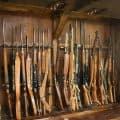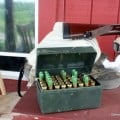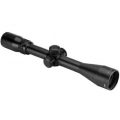The Case for Cheap Bullets
Well, not really cheap bullets. “The Case for the Standard Hunting Bullet for Whitetail Deer,” is probably more accurate, but it sounds like a master thesis. This is just a rant. “The Case Against Premium Bullets” sounds mean spirited and negative.
I am going to speak heresy here. I am not enamored with premium bullets, not in the least and certainly not when it comes to deer hunting. I guess I’m just an old fud, but I can still remember a time when Remington Core-Lokt WAS a premium bullet. Normally I just sit in the back and stay quiet, but I figure this forum is about the last place a master reloader is going to go for information. A beginner might, however. The old veteran reloader has his mind set. You, the guy who might be reading this, may be more open to a different opinion.
Let me begin this rant by giving you my background. First, I’m a deer hunter of 28 years’ experience. Second, I’ve been reloading for myself since 2000 and have not shot a deer with factory ammo in over a decade. Third I have seen a lot. I have even seen bullets under-perform. However, I have never seen a well-chosen bullet fail on a deer. Also, I am not going to address the issue of Elk in Colorado or Moose in Newfoundland. My experience is centered on hunting whitetail deer in the states of the Ohio River Valley, mostly Kentucky. The deer that arrive in my sights may go up to 300 lbs– my largest to date went 270 lbs live weight.
Let us also define our terms here. For this discussion, let me use three terms. There are a few mainstream bullet manufacturers out there with names we recognize. Remington, Speer, Hornady, Winchester, Sierra. These are the bullets you find in the reloading manuals. These are what you generally think of as non-premium bullets. These we will call “standard bullets.” “Premium bullets” will mean any bullet that has a significant price differential above a standard bullet and that has some touted feature or capacity above a similar standard bullet. “Cheap bullets” are bullets that are from an unrecognized source or whose major advantage is that they are priced under a standard bullet. An example: The standard Rem Core-Lokt .308 150 Grain PSPCL currently goes for $0.25 apiece. The Remington Accutip goes for about $0.36 apiece. I have seen a similar imported bullet that I would not trust for about $0.11– we’ll call that one cheap. That 11-cent price is probably outdated. For that you could probably now buy the bullet, melt it down and resell the alloy and turn a profit.
The standard bullet we are discussing here is basic cup-and-core design. Most standard bullets are made in this way. A lead slug is forced into a guilding metal cup with a lot of force and by some means or other the lead and guilding metal are caused to stay together. Remington calls their method “Core-Lokt.” Hornady calls their method “Interlok.” The idea here is to keep the lead and guilding metal together while it is going through the deer. The guilding metal is supposed to peel back, the lead core is supposed to flatten out and form the classic mushroom shape. A standard bullet does this. A premium bullet does this. What’s the difference?
Supposedly the premium bullet does it better. How better? Bullet manufacturers have two basic criteria: retained weight and diameter of the resulting mushroom. There are going to be a lot of other features and measurements, but these are two that count the most. You want a bullet that opens up just enough and at the same time sheds a minimal amount of mass. The bottom line is supposedly better penetration and a superior wound channel. However, it is never a good idea to equate penetration through ballistic gel or wet newspaper with what it is going to do to a deer. The other problem is that the window for that performance is remarkably small. If you measure your next deer, you’ll find even a barrel-chested buck may only be 48″ in circumference. That’s only 16 inches of deer the bullet must traverse and most of that has the consistency of jello. By the time the bullet travels half that distance, the decision as to whether the deer is dead or not has already been made. The question only remains as to whether the bullet will exit and leave you a second hole for a blood trail. In 28 years, I have seen only one standard bullet not leave the deer and this was on a brisket shot. Comparing retained weight and expansion usually is a moot point. Under normal conditions, good luck finding the bullet– it’s buried in the dirt somewhere on the far side of the deer.
Accuracy? Sometimes a premium bullet may be better than a standard when it comes to accuracy. Whatever bullet works best in your rifle– but be honest about it and start cheap and work your way up. Yes, the Sierra 140 grain might not shoot well in your rifle and the Nosler Accubond may shoot better, but did you try the Hornady Interlok first? Accuracy is also one of these things where we talk ourselves into a lot that just is not so. Normal hunting accuracy for deer is about 4 inches at 100 yards. If you can keep a rifle to that benchmark, you will probably be able to kill a deer. Normally you can get a lot better by just playing around with the load a little bit. 1 MOA or 1 inch at 100 yards is going to be just fine. You can get there with a Barnes TSX, but you may also be able to get there with the Remington Bulk PSPCL, and you won’t know until you try. Some time go over to MidwayUSA.com and read the remarks about Remington and Winchester Bulk Bullets. These are bullets that are sold by the bag. The customer comments are usually along the lines of “ugly, blemished, irregular. . .”, but if the guy actually takes them out and tries to shoot them: “Great Accuracy!” “Kills deer DRT!”– I’m paraphrasing. The point is that ugly bullets are not necessarily ineffective.
The other issue about accuracy is how far folks really shoot deer. I get email from guys asking for the best bullet for offhand shots at 300 yards, when you know darn well they probably are going to be shooting accurately at 50 yard at most. My admonition: Stop watching so much TV. Leave the spotting scope home. Get up and move your silly buns closer and use a rest. Guys fill their heads with magazine ads and TV hunting shows. Yes, it may make sense to have a bullet that promises 25% better concentricity if you are hunting elk and taking 600 yard shots out West. Where I hunt, you could probably drop bowling balls out of your treestand at them. Hmmmm. I wonder. . .
A lot of folks think that a polycarbonate dohinkus on the end of a premium bullet is some great godsend. The fact of the matter is that hunters are a fastidious lot and it galled them to see all their soft-pointed ammunition with distorted points. Yes, a disheveled looking point will cause accuracy problems. However, adding a dohinkus will not turn a rifle that shoots 8″ groups at fifty yards into a 1MOA rifle. It possibly won’t even turn a 1 MOA rifle into a 1/2 MOA rifle. At normal deer hunting distances, inside 200 yards or so, the difference is pretty cosmetic. Yes, you have a nice pretty bullet to put in your rifle, but is it worth all the extra cost when you are shooting at a kill zone the size of a basketball? Okay, maybe a soccer ball.
There’s always the Buck of a Lifetime or Hunt of a Lifetime argument. I’ve already shot my buck of a lifetime. He walked up to my treestand a couple of years ago, and I shot him and he ran a few yards before piling up. I shot him with Hornady Interlock .308 165 grain SP’s. I shot him standing broadside to my stand about 30 yards out. When I opened him up, his lungs and heart were gone. He left a blood trail a blind man could follow. Before I switched bullets, I’d have to have a serious reason– even if it were the hunt of a lifetime. I would have to try what I know already works and see how it performed at the range I expected to shoot. My wife plugs milk jugs at 450 yards with her 30-06 and Hornady 150 grain Interlok FMJBT’s, so I know a standard bullet will work as far as accuracy. I bought her 500 rounds for Christmas– don’t you just love wives who shoot? They’re so easy to buy for.
Don’t get me wrong. You will have bullet failures. Eventually you will find bullets that do not do what you expect. I have had two such situations. Neither one could be scientifically tied to the bullet, but I changed the bullet and the problem went away. In the first case, I experimented with loading for a 30-30 for my kids. My son had problems. I myself had problems. In one of the strangest cases of my life, I put three 150 grain Hornady Interlok slugs into a small doe standing at the base of my stand, and she went on feeding, despite an 8-foot arterial spurter coming from the other side. I switched to Winchester 150 grain PP and the next deer went down like she should. In the second situation, I tried a .358 200 grain Remington PSPCL out of my new 35 Whelen on a monster buck and he just stood there glaring at me. I put two more into him before he decided to give up. I was racking in the round #4 when he fell over. I switched to the round nosed variant of the same bullet and the problem never repeated itself. In the 30-30 case, I think my boy was probably jerking the trigger. My experience with the rifle was a bit of a fluke. In the 35 Whelen case, there is a possibility that the Remington 200 grain PSPCL was built a little too tough for the game and did not expand well. If I really forced myself to think about this hard, I’d know the bullet was not my problem, but changing bullets made me feel better. In any event, I did not need to resort to a premium bullet to fix my problem.
One might assume that I have some deep seething hatred of premium bullets from all this. I don’t. What I am concerned with is several situations that crop up:
1) Folks think you need premium bullets to kill a whitetail deer and fail to experiment much, because the cost is so high.
2) Folks have a mishap when hunting, usually losing a deer, and blame the bullet before looking for another reason. The simple truth is that a modern hunting bullet is usually the least of your worries.
3) Lack of practice usually is the worst cause of lost deer. Folks go out and fire a couple of rounds to get sighted in and then do not bother to practice further, because the ammunition is so doggone expensive. Making affordable ammunition is one of the chief reasons why folks get into reloading in the first place.
4) Folks substitute magazine-inspired superstition and barbershop physics for common sense. There is no such thing as going too fast to expand. There is no magic threshold velocity for “hydraulic shock” versus wound channel. There is no such thing as bullet failure if the bullet is never recovered and there certainly is not if you find the deer dead with an exit wound. Bullets do not gain velocity after they leave the barrel.
The bottom line here is that you can’t spend your way out using common sense. You cannot simply buy the most, the biggest, the ultimate and be assured of anything. The occasional deer is going to run. You are going to shank the occasional shot. A bullet you have been pole-axing deer with for a decade is occasionally leave you scratching your head. It is a natural part of deer hunting.
Let me lastly bring a simple mention to cheap bullets. I left that definition fairly open and general. Here is what I worry about with cheap bullets. I can buy Remington or Winchester bullets in bulk lots of 500 or 1000 and be fairly certain that the bullets are the same as what goes into their production ammunition. That is about as far as I am going to go in a hunting bullet. I am not going to knock any manufacturer or any bullet. However, if you find yourself offered a lot of Golden Ocelot 7mm, you venture down that road at your own risk. I find great value in having repeatable performance out of bullet. I can go to the store and buy 165 grain Hornady and be fairly assured I’ll have the same bullet I’ve been shooting for a decade. If I don’t you can bet Mister Hornady will get a nasty letter. I’ve bought my share of weird off-brand ammo and components, but over time I learned. It is one thing to punch paper. It is still another to see a nice buck in your scope in the proper toes-up position.
Okay, I’m done with my rant for now. I don’t mean this to be the last word on the issue either. I am making a proposition that I think deserves to be debated. The right of an individual to shoot $1/round bullets is not at issue here, nor is it’s ethics, nor is religion. I know there are guys out there that worship the Nosler Partition or the Barnes TSX, and I respect your zeal and commitment.
This post has already been read 790 times!
Views: 1









Comments
The Case for Cheap Bullets — No Comments
HTML tags allowed in your comment: <a href="" title=""> <abbr title=""> <acronym title=""> <b> <blockquote cite=""> <cite> <code> <del datetime=""> <em> <i> <q cite=""> <s> <strike> <strong>